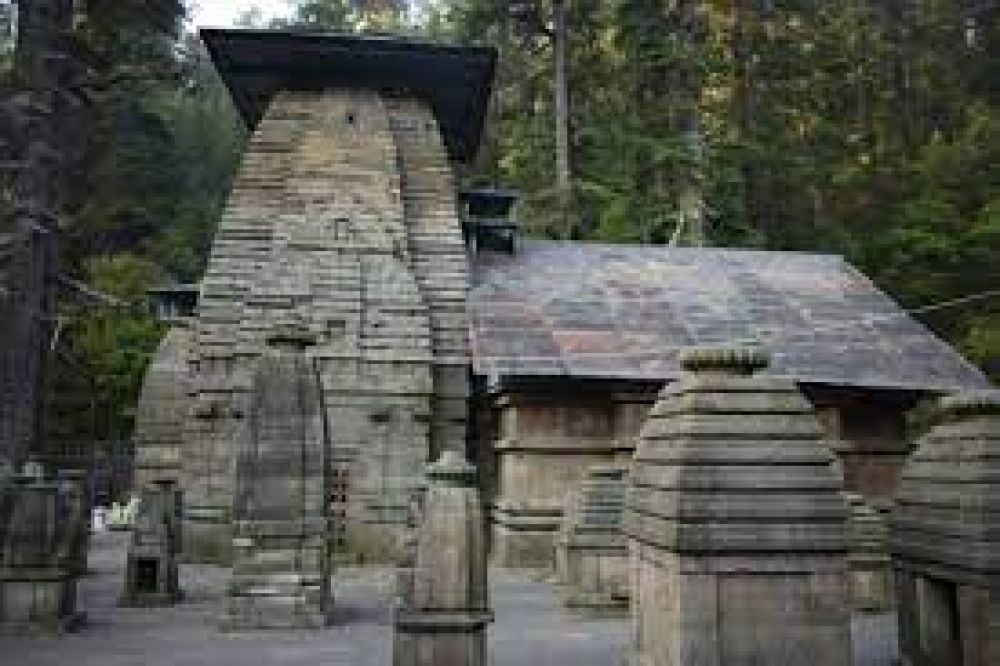

The small and serene town of Jageshwar, located in the Almora district of Uttarakhand, India, is a treasure trove for spirituality seekers and history buffs alike. Nestled in the lap of the Kumaon hills, amidst dense Deodar forests and the Jata Ganga river, the area is home to a cluster of over 100 ancient temples, with the Mahamritunjaya Temple being one of the highlights of this sacred complex.
The history of tourism around Mahamritunjaya Temple and Jageshwar can be traced back to medieval times when pilgrims journeyed across treacherous terrains to seek the blessings of the deities enshrined here. The Mahamritunjaya Temple, dedicated to Lord Shiva, is one of the oldest in the group, dating back to between the 8th and 9th century AD, although temple activities are believed to have origins much earlier in the prehistoric period. Its history is entwined with the lore of Shiva, and it's said to enshrine one of the twelve Jyotirlingams, making it an important pilgrimage stop within the Hindu religion.
With its magnificent architecture, the Temple stands as a testament to ancient Indian engineering and artistry. It features a unique pyramidal roof and a beautifully carved entrance that showcase the classical style of early medieval north Indian temple architecture. Inside, the lingam of Lord Shiva is worshipped, and it is this object of veneration that has drawn countless devotees over the centuries.
In recent times, Jageshwar has seen a steady increase in tourism, not just for its religious importance but also due to the tranquil environment and the lush green settings that surround it. The area has been developed keeping in mind eco-tourism principles to preserve the pristine natural beauty and the heritage value of the temples.
The visitor demographics have shifted to include not only devotees but also nature lovers, history enthusiasts, and those interested in yoga and meditation. Tourism services have expanded, offering pilgrim stays, guided tours to explore the archeological significance of the temple site, and walks through the surrounding forest reserves.
The annual Maha Shivaratri festival attracts a massive influx of worshipers during the spring season. The festival is a spectacle of devotion and cultural celebration, making it an excellent time for tourists to experience local traditions and customs first-hand.
Recognizing the importance of Jageshwar, the Archaeological Survey of India (ASI) has undertaken the task of preserving the temples, including the Mahamritunjaya Temple. Continuous efforts are made to maintain the structures, sculptures, and carvings that speak volumes of the spiritual and historical legacy of this place.
Despite its remote location, Jageshwar is becoming more accessible due to improved road networks and the proximity to Almora town. With tourism becoming an important aspect of the region's economy, infrastructure development is on the rise, ensuring better facilities for visitors without compromising the ecological or spiritual ambiance.
As the world shifts towards seeking meaningful and transformative travel experiences, Jageshwar, with the enigmatic Mahamritunjaya Temple at its heart, continues to offer a journey that is both introspective and historically enriching. Visitors leave this place not just with memories of the past, but with a sense of inner peace and renewal.
For those looking to visit, the nearest airport is at Pantnagar, and the closest railway station is Kathgodam. A range of accommodations are available, from budget lodges to more comfortable resorts, catering to the needs of diverse travelers.
Jageshwar and the Mahamritunjaya Temple beckon to those yearning for a confluence of divine energy, natural beauty, history, and culture. It remains a destination where the past and present coalesce, offering an experience that is truly timeless.